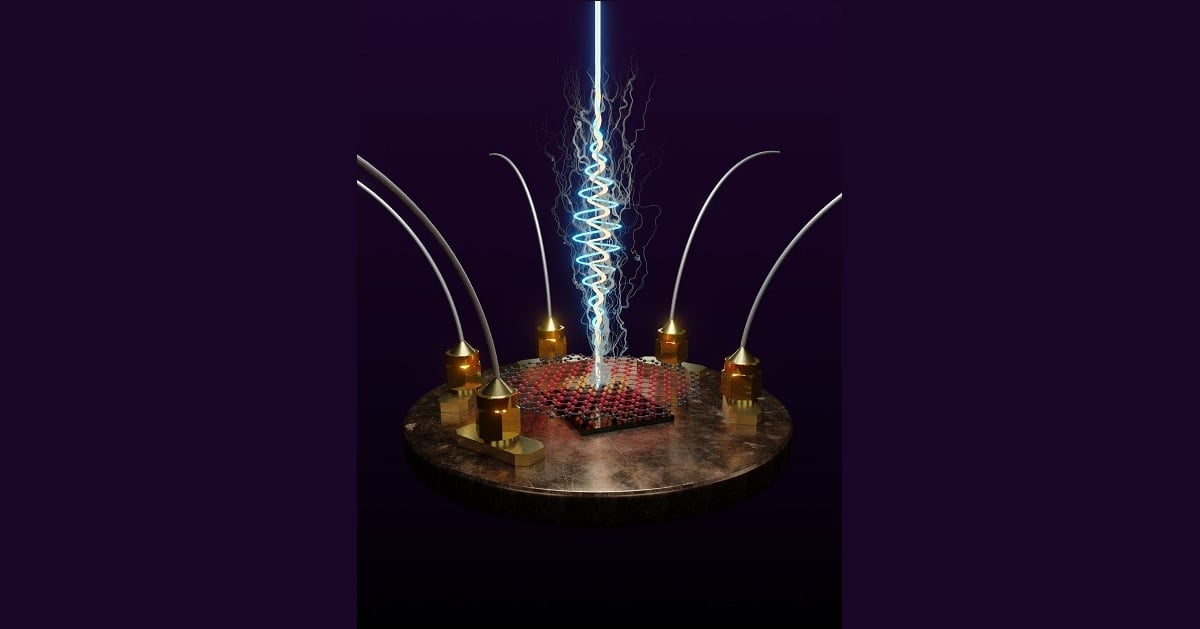As the Army builds its forces on the multi-domain operations concept for future warfighting, a core problem for today’s technologists is figuring out how to have a constant view of the battlefield and share that information across the globe.
Today’s computers simply can’t handle the immense amount of data and speed necessary for commanders and soldiers to gain a clear picture of their surroundings and the ability to use that information.
Enter quantum computing — a long sought-after solution for advancing computing processing and capabilities, which while promising is still a delicate and resource-intensive way of crunching numbers.
RELATED

Three recent Army science-funded breakthroughs are solving decades-old problems that could put quantum supercomputers in the hands of Army decision makers.
In recent weeks, papers published through Army and Air Force-led efforts have found new ways to correct longstanding errors in quantum methods, using machine learning techniques to improve sensing and methods to build quantum communication networks.
Traditional computers are built using transistors that turn on or off a signal, signifying a 1 or a 0, which becomes the code that the computer reads to perform tasks.
But quantum computing uses units called qubits, offering a plethora of other ways to represent data. That option then provides exponential gains in processing power.
More processing power means more data, which leads to a wider- and higher-resolution view of what’s going on in the real world for military commanders.
Those qubits, however, are more sensitive to errors, which mean more resources in the hardware devoted to checking and correcting those errors.
Researchers at the University of Massachusetts Amherst, under funding from the Army Research Office and Air Force Office of Scientific Research, found ways in recent experiments to protect quantum information from errors caused in superconducting systems. These are the main platforms on which scientists anticipate building large-scale quantum computers, according to research published in the journal Nature.
This method allows for the errors to be spontaneously corrected, vastly improving efficiency, which would help reduce the burden on future computers.
“Efficiency is increasingly important as quantum computation systems grow in size to the scales we’ll need for Army relevant applications,” said Dr. Sara Gamble, ARO quantum information science program manager.
A separate team, at Louisiana State University, has found a way to use machine learning to correct information distortion in quantum systems that are made of photons.
The paper, published in Advanced Quantum Technologies, showed “machine learning techniques using the self-learning and self-evolving features of artificial neural networks can help correct distorted information,” according to an Army statement.
Photons essentially serve as carriers of quantum data, moving them across the network. But the information can be distorted by environmental fluctuations.
Think of sending a letter in the mail but the letter gets soaking wet, bleeding out all of the ink on the paper, making it unreadable. The letter still arrived but it’s useless and unable to be reconstructed.
This machine learning method could hold multiple applications.
Using light modes to transmit quantum information is used in quantum communication, cryptography and sensing, said Narayan Bhusal, an LSU doctoral candidate.
“Our method is remarkably effective and time-efficient compared to conventional techniques,” Bhusal noted. “This is an exciting development for the future of free-space quantum technologies.”
Lastly, scientists at the Pritzker School of Molecular Engineering at the University of Chicago, through funding and management by the U.S. Army Combat Capability Development Command, were able to send entangled qubits through a communication cable, linking two network nodes.
Their work was published in the journal Nature.
“This is an exciting achievement and one that paves the way for increasingly complex experiments with additional quantum nodes that we’ll need for the large-scale quantum networks and computers of ultimate interest to the Army,” Gamble said.
Scientists must be able to transfer entangled qubits in order to scale up quantum computing, said John A. MacLean, senior professor at the University of Chicago and lead researcher for the effort.
“To send the entangled states through the communication cable—a one-meter-long superconducting cable—the researchers created an experimental set-up with three superconducting qubits in each of two nodes,” according to an Army statement. “They connected one qubit in each node to the cable and then sent quantum states, in the form of microwave photons, through the cable with minimal loss of information.”
Todd South has written about crime, courts, government and the military for multiple publications since 2004 and was named a 2014 Pulitzer finalist for a co-written project on witness intimidation. Todd is a Marine veteran of the Iraq War.





